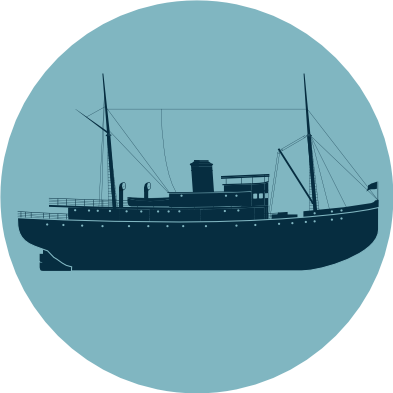
 0
0Transcription: "The first peoples, the first navigators"
This page includes the written transcript of this podcast, translated into English.
Magtogoek, the "path that walks." This is how the Algonquins named the river.
The ancestors of the First Nations were already nomadic in this valley at the time of its geological formation. During the millennia in which the ice cap melted, giving birth to the river, the ancestors of the Abenaki, Naskapi, Algonquin, Cree, Mohawk, Attikamek, Innu, Huron-Wendat, Wolastoqiyik, and Mi'gmaq occupied the territory around this great waterway. Then pivotal encounters marked the timeline: as the jugular vein makes blood flow in the human body, so Magtogoek attracted a flood of new populations from the east.
Who were the first Europeans to sail up the St. Lawrence?
Medieval manuscripts speak of the navigations of Saint Brendan, an Irish monk of the sixth century. He travelled the Atlantic Ocean with a few companions in a traditional boat, the curragh. Where exactly did they go? What are these islands that they describe as paradisiacal? We don't know, just as we don't know the real routes taken by the ancient Scandinavians, the famous Vikings. Around the year 1000, the Vikings explored the coasts of an as yet unnamed continent. Some even lived for a time on the island of Newfoundland, at L'Anse aux Meadows. It is quite possible that these northern explorers penetrated the Gulf of St. Lawrence. Several written documents speak of the famous Vinland, but, in the absence of archaeological data, historical science must wait for proof.
The real European pioneers documented on the continent are the Basque, Breton, French, and Portuguese fishermen. In the 16th and 17th centuries, they pursued schools of cod, whales, and seals, sometimes even reaching the shores of the St. Lawrence estuary. Île aux Basques, for example, near Trois-Pistoles, owes its name to the fact that Basques occupied the area for several decades. These fishermen of different origins were the first Europeans with whom the local populations exchanged goods and information. Trade has always taken shape wherever human groups meet.
When Jacques Cartier, mandated by the King of France, arrived from Saint-Malo, reaching the Gaspé shores in 1534, he was far from being the first European to do so.
Contrary to what has often been said in history courses of another era, the writings attest that the local populations already knew the Europeans and dealt with them. Cartier, on the other hand, was fearful and suspicious of the First Nations. Later on, Samuel de Champlain developed a closer relationship with certain Indigenous populations. They would negotiate together what would become the first alliance between First Nations and Europeans in 1603, paving the way for the founding of Quebec City.
